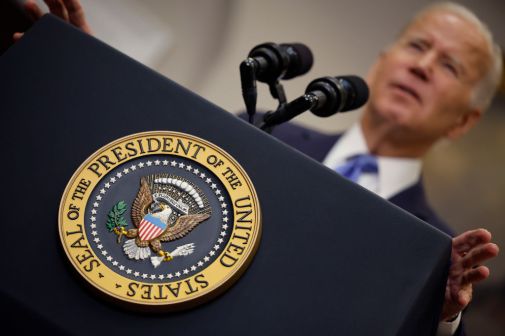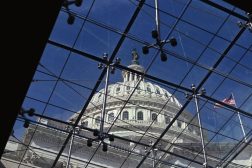
Lawmakers believe the U.S. Digital Service and General Services Administration’s 18F can play important roles in fixing the broken federal IT enterprise. But they want specific and measurable goals from the IT SWAT teams, and better insight into how they fit within the existing landscape of government CIO shops partnered with commercial IT vendors.
The key criticism leveled by lawmakers at the two digital teams in a House Oversight and Government Reform IT Subcommittee hearing Friday was that they aren’t transparent enough about how they’re serving agencies and driving meaningful outcomes.
“If 18F and USDS can help us achieve an efficient and transparent government worthy of its people – and do so in a way that is clear, cost-effective, measurable, appropriate for government role – then I am very open to supporting them,” subcommittee chair Rep. Will Hurd, R-Texas, said in his opening statement.
Generally, both organizations exist to improve government’s digital service delivery. But the Government Accountability Office found, in a report released at the hearing, that both must develop more outcome-oriented goals and performance measures to be more effective and avoid overlap with each other, other agency IT teams and IT vendors.
“In many ways, 18F and USDS are positioned to be key enablers in the effort to achieve digital government,” said Trey Hodgkins, public sector senior vice president for the IT Alliance for Public Sector.
However, “there is a general lack of clarity and understanding about these programs,” Hodgkins said, based on talks with the companies ITAPS represents. “What are they doing? What are they not? And how can they be expected to operate?”
USDS and 18F are “already serving as disruptors,” Hodgkins said, but he stopped short of saying they are having a general positive effect on improving government digital services and modernizing its IT.
“It’s hard to tell in some areas because of the opaqueness of some of the things they’re doing,” he said.
However, the feedback from agencies who USDS and 18F have served has been overwhelmingly positive, according to the GAO report. Only three of 18F’s more than 30 projects resulted in “moderately dissatisfied” customers, while more than half of the projects left customer “very satisfied;” none of USDS’ 13 projects received negative feedback.
It is contractors in particular who seem to be worried by the federal digital teams — specifically 18F because of its fee-for-service model and perceived competition as a builder of custom technology for other agencies — infringing on their business. Meanwhile, the 2-year-old 18F, which operates in many ways like a startup inside the government, is still working to balance its revenues and expenditures, and plans to begin recovering its costs by fiscal year 2019
“18F’s focus on building custom departs from the longstanding reliance on a buy, not build, procurement policy,” said David LeDuc, senior director of public policy for Software and Information Industry Association. “Competition from 18F can only be expected to grow stronger over time for private sector IT vendors, particularly affecting small businesses.”
In some cases, he said, 18F might help write a procurement plan or request for proposals, and then bid on it, effectively becoming both buyer and seller.
Phaedra Chrousos, commissioner of GSA’s recently formed Technology Transformation Service, said LeDuc’s assertion of 18F as a competitor to private IT firms was incorrect, but acknowledged 18F has no one to blame but itself for the misconception.
“We haven’t done a very good job of communicating what 18F does,” Chrousos said. “We absolutely take a buy-first approach. We have one service line that builds out prototypes and light web services, but that’s done not in competition with the private sector but as a way to showcase modern methodologies and practices to agencies.”
In doing such, she said, 18F “absorbs the first move of risk” for agencies moving to or procuring new digital technologies.
Several lawmakers still didn’t understand what USDS and 18F provide that agencies can’t get through a solicitation of technology or services from private firms. “We act as an ecosystem where talented people from the private sector can come in and learn how to adapt their practices to government and then show government how to do that,” Chrousos said.
Many subcommittee members touted the teams, both with more than 100 members now, for their ability to attract strong private sector IT talent to the federal government, a top concern for most traditional federal IT shops.
USDS Administrator Mikey Dickerson sees his organization’s greatest value as its “ability to coordinate and work across all the organizational boundaries to solve what are often very complicated problems with a lot of stakeholders and [that] involve a lot of parts of the agency,” he said.
The lawmakers stressed that as these two organizations grow, they should ensure they are closely aligned with the vision of the CIOs they work with and the spirit of the Federal IT Acquisition Reform Act.
Hurd said it might do the teams some good to integrate more closely with the likes of the federal CIO Council and U.S. CIO Tony Scott — who “knows where the problems are,” he said — to address some of the bigger issues plaguing government, like those multi-billion dollar programs on GAO’s High Risk list.
“The CISO of the Social Security Administration needs a whole lot of help,” Hurd said, adding that the list of successes from the teams, particularly the USDS, aren’t the ”tectonic changes that we likely need.”
For those kinds of projects, Hurd said, there really is a need for these kinds of digital teams partnered with the private sector to solve government’s IT woes.
“The government’s messed up. The way we buy IT goods and services is messed up,” he said. “The only way that we are going to get a digital infrastructure in the federal government that the American people deserve is if we break some things on the inside, and we utilize the talents of the private sector as well.”
Dickerson, in his closing remarks, took some validation from the hearing.
“I’m very gratified to hear unanimity on the point that 18F and USDS have an important role to play in improving our overall government services,” he said. “I certainly take away the point that there are many parts to this problem and all of us have an important role to contribute to it.”
Contact the reporter on this story via email at Billy.Mitchell@FedScoop.com or follow him on Twitter @BillyMitchell89. Subscribe to the Daily Scoop to get all the federal IT news you need in your inbox every morning at fdscp.com/sign-me-on.






